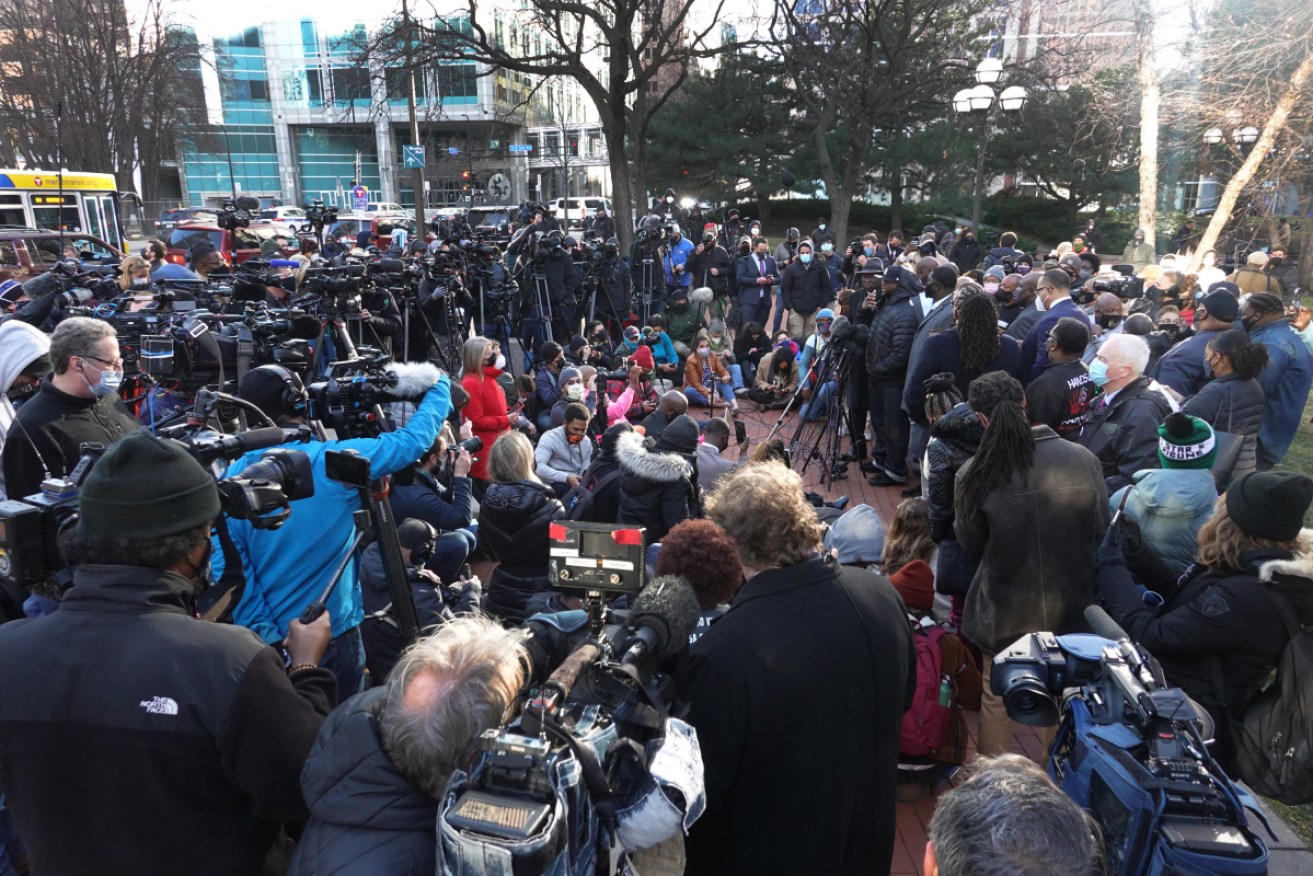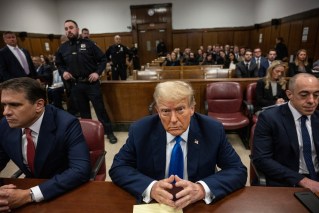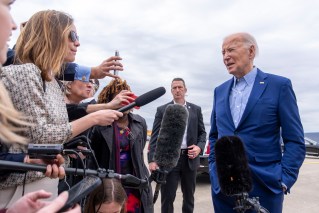Day one of George Floyd murder trial ends with powerful video

The crowd outside the Minneapolis courtroom after the first day of the George Floyd murder trial. Photo: Getty
The video of George Floyd gasping for breath was essentially Exhibit A as the former Minneapolis police officer who pressed his knee on the black man’s neck went on trial on charges of murder and manslaughter.
Prosecutor Jerry Blackwell showed the jurors the footage at the earliest opportunity, during opening statements on Monday (US time), after telling them the number to remember was 9 minutes, 29 seconds – the amount of time officer Derek Chauvin had Mr Floyd pinned to the footpath last May.
The white officer “didn’t let up” even after a handcuffed Mr Floyd said 27 times that he couldn’t breathe and went limp, Mr Blackwell said in the case that triggered worldwide protests, scattered violence and national soul-searching over racial justice.
“He put his knees upon his neck and his back, grinding and crushing him, until the very breath – no, ladies and gentlemen – until the very life was squeezed out of him,” the prosecutor said.
Mr Chauvin’s lawyer Eric Nelson countered by arguing: “Derek Chauvin did exactly what he had been trained to do over his 19-year career.”
Mr Floyd was fighting efforts to put him in a squad car as the crowd of onlookers around Mr Chauvin and his fellow officers grew and became increasingly hostile, Mr Nelson said.
The defence lawyer also disputed that Mr Chauvin was to blame for Mr Floyd’s death.
Mr Floyd, 46, had none of the telltale signs of asphyxiation and he had fentanyl and methamphetamine in his system, Mr Nelson said.
He said Mr Floyd’s drug use, combined with his heart disease, high blood pressure and the adrenaline flowing through his body, caused a heart rhythm disturbance that killed him.
“There is no political or social cause in this courtroom,” Mr Nelson said.
“But the evidence is far greater than 9 minutes and 29 seconds.”
Mr Blackwell, however, rejected the argument that Mr Floyd’s drug use or any underlying health conditions were to blame, saying it was the officer’s knee that killed him.
Mr Chauvin, 45, is charged with unintentional second-degree murder, third-degree murder and manslaughter. The most serious charge, the second-degree murder count, carries up to 40 years in prison.
This is the first trial ever televised in Minnesota.
The video played during opening statements was posted to Facebook by a bystander who witnessed Mr Floyd being arrested after he was accused of trying to pass a counterfeit $20 bill at a convenience store. The footage caused revulsion across the US and beyond and prompted calls for the country to confront racism and police brutality.
Jurors watched intently as the video played on multiple screens, with one drawing a sharp breath as Mr Floyd said he couldn’t breathe. Mr Chauvin sat calmly during opening statements and took notes, looking up at the video periodically.
“My stomach hurts. My neck hurts. Everything hurts,” Mr Floyd says in the video, and: “I can’t breathe, officer.”
The prosecutor said the case was “not about split-second decision-making” by a police officer but excessive force against someone who was handcuffed and not resisting
Fourteen jurors or alternates are hearing the case – eight of them white, six of them black or multiracial, according to the court. Only 12 will deliberate; the judge has not said which two will be alternates.
After the day’s proceedings, a few hundred protesters gathered outside the courthouse. Speakers called for justice for Mr Floyd and others whose lives were lost in encounters with police.
The downtown Minneapolis courthouse has been fortified with concrete barriers, fences and barbed and razor wire. City and state leaders are determined to prevent a repeat of the riots that followed Mr Floyd’s death, with National Guard troops already mobilised.
Mr Chauvin’s trial is being livestreamed over the objections of the prosecution. Judge Peter Cahill ordered that cameras be allowed largely because of the pandemic and the required social distancing, which left almost no room for spectators in the courtroom.
Three other former officers go on trial in August because Judge Cahill ruled there wasn’t enough space to try all four at once.
-AAP







